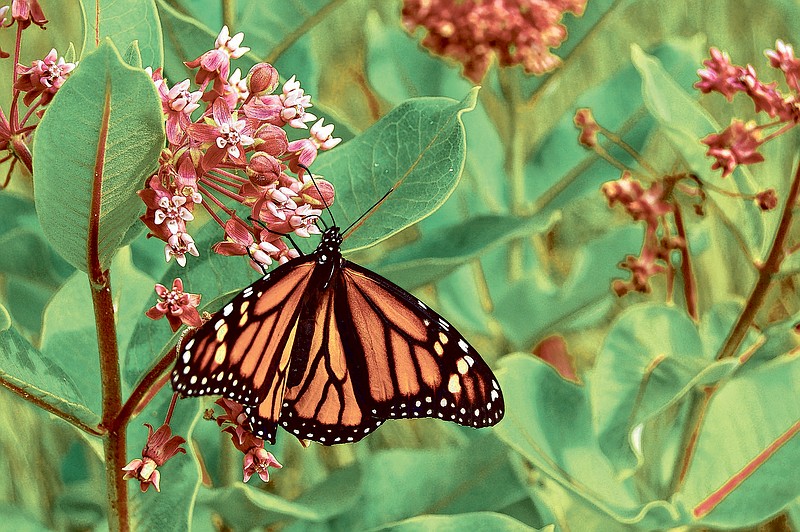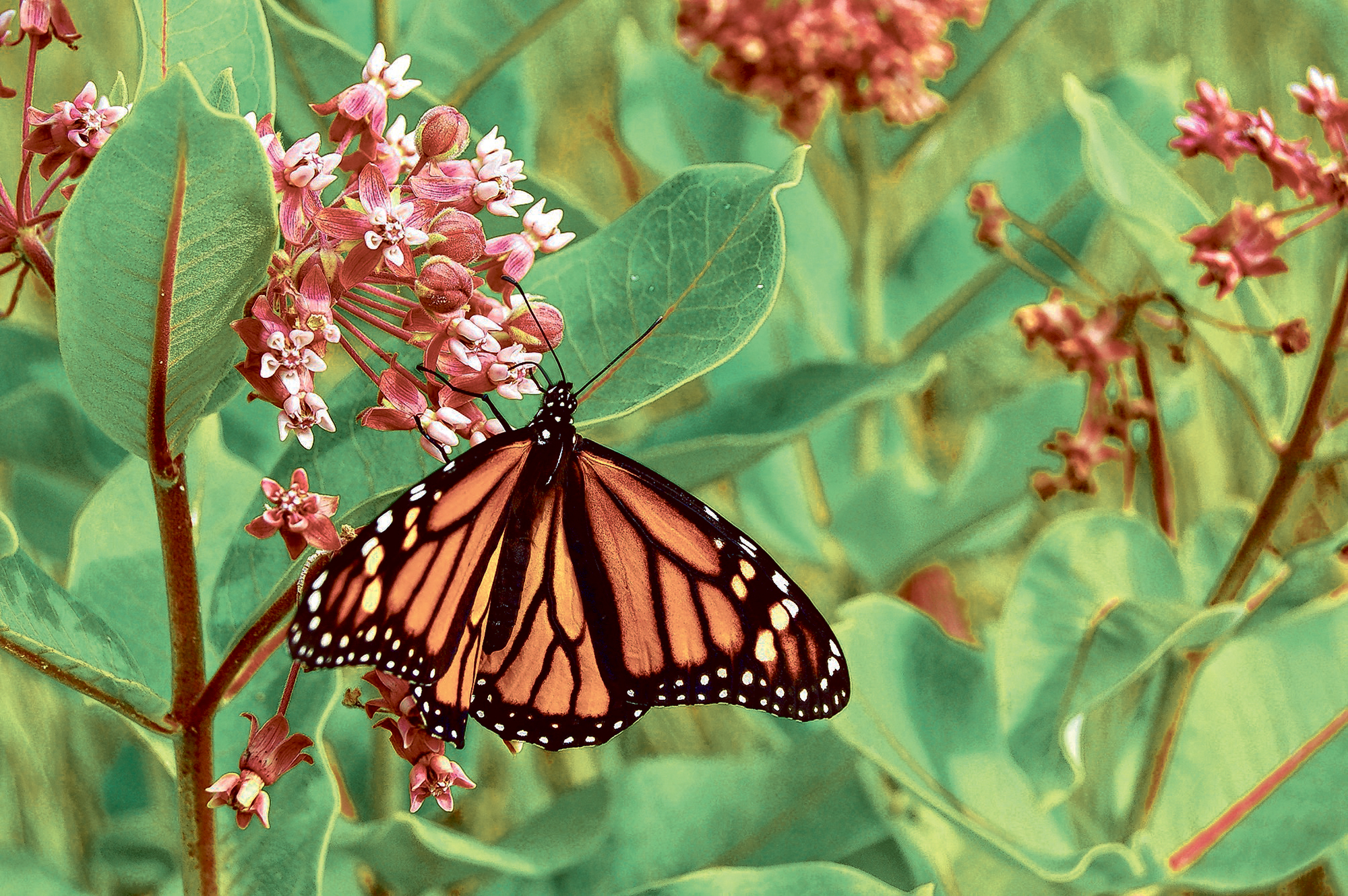Monarch butterflies are -- quite literally -- a force of nature.
They strike out each year by the thousands on a four-generation, 3,000-mile-long journey of pure instinct and faith.
They use both inherent and imprinted knowledge. They use subterfuge, placing their eggs on a plant that feeds their young caterpillars, but makes them poisonous and distasteful to predators. They use natural GPS.
The yearly flight of the monarch butterflies is the longest-distance insect migrations known on Earth, and they've made the same epic journey over and over for thousands of years -- migrating in spring from one location in Mexico, up over the Southeast, into the Midwest and into Canada for the summer, then retracing the route back to a dozen specific high mountain peaks in central Mexico where they roost.
Along the way, they mate, lay eggs, die.
All the while, their young hatch into caterpillars, form larvae, then morph into the spectacular dotted and lined royalty of the butterfly world. Then the next generations continue the journey. Over and over. One journey involves three to four generations of monarchs.
Lucky us! We're not only on the royal flight path, we -- the southeastern states -- provide the monarch cradle.
But with privilege comes responsibility, and that means it is largely up to us to ensure the survival of this endangered species and help it continue its time-honored odyssey.
The numbers of monarchs were believed to be down by nearly half in 2014, mainly due to loss of habitat.
By habitat we mean loss of one plant: milkweed.
All about milkweed
Milkweed is anything but a weed. It is one of nature's most beautiful flowers. The Southeast has five varieties of native milkweed: butterfly weed (asclepias tuberosa), whorled milkweed (asclepias verticillata), white milkweed (asclepias variegata), aquatic milkweed (asclepias perennis) and sandhill/pinewoods milkweed (asclepias humistrata), according to a milkweed information sheet from the U.S. Forest Service
Monarchs for Grace
Learn more today at March Monarch Madness at Grace Episcopal Church in Chattanooga. From 12:20 to 4:30 p.m., Grace Episcopal Church, a greenfaith congregation at 20 Belvoir Ave., will host Brevard naturalist Ina Warren to teach about the monarch butterfly. The program includes a free lunch, free plants, free seeds, free program. For more information, visit www.saygrace.net
Monarchs only lay their eggs on milkweed, according to Christine Bock, lead horticulturist at Tennessee Aquarium, and the milkweed as a monarch cradle and delivery room isn't just an accidental fluke of simply choosing a lovely nursery.
It is required habitat. Required for survival.
Mommy monarchs somehow understand that milkweed contains a substance that makes the developing caterpillar poisonous and distasteful to most predators -- an important protection since mom won't live long after laying her eggs.
So it is our brood of monarchs -- those that survive infancy as caterpillars, form a chrysalis and then morph into new adults -- that continue the monarch migration into the northern United States and southern Canada to breed.
Once the monarchs found plenty of milkweed among our southern prairie grasslands and even between the rows of large corn and soy fields. But now our sheer numbers have spawned acres of development, and our dubious wizardry with genetically modified crops has created corn and soy plants that are resistant to herbicides, meaning farmers can and do liberally spray their fields to kill weeds -- even milkweeds -- without harming their corn and soy.
Monarchs -- the only butterfly known to make a two-way migration as birds do -- sense certain topographical features, avoiding both large bodies of water and tall mountains. Instead, they choose cool valley passes between mountains and often along river corridors. Only traveling during the day, they make use of air currents and thermals to fly long distances -- often between 50 and 100 miles a day. The fastest ranging monarch butterfly recorded traveled an 265 miles in one day, according to the U.S. Forest Service.
Unlike other butterflies that can overwinter as larvae, pupae, or even as adults in some species, monarchs cannot survive the cold winters of northern climates. Using environmental cues, these uncanny forecasters know when it is time to travel south for the winter. In Mexico, they cluster together by the tens of thousands to stay warm and roost for the winter in about a dozen oyamel fir forests that stand in a perfect microclimate nearly 2 miles above sea level. Here temperatures range from 32 to 59 degrees. If the temperature is lower, the monarchs will be forced to use their fat reserves. The humidity in the oyamel forest assures the monarchs won't dry out, also allowing them to conserve energy.
Every spring, the overwintered monarchs head north in waves. Throughout the southeast, they lay eggs on milkweed -- only milkweed.
Once our babies begin the journey again, they are still in for a perilous trip. They'll face bad weather that can throw them to less friendly paths, and they'll face onslaughts from a handful of songbirds that can stomach their taste -- like the black-headed grosbeak and the black-backed oriole.
Still, the biggest danger is loss of habitat. Loss of milkweed.
But that's where we come into the story -- hopefully this time as heroes.
Sometime around the middle of August, the monarchs' heed the call to Mexico and reset their travel southward toward "home." Remember, these flyers are now the third or fourth generation from their ancestor monarchs who came from Mexico. These flyers have nothing but instinct and faith to guide them.
At locations where monarchs have been known to cluster on their way south -- like on the tip of a peninsula where they wait for favorable winds to carry them over a lake or inlet or wide river -- groups of citizen scientists gather and tag them for research.
Adhesive paper dots the size of eraser tips are affixed to a wing, before the monarch is released. When the tagged monarchs eventually fall to a natural death because their life is over -- usually in Texas or Mexico -- more citizen scientists find and record the information on the sticker, giving real scientists and naturalists a way to track to incredible journeys of monarchs. Bock and local citizen scientists hope to be tagging monarchs here later this year.
But she says the most important way we can help is to make sure the monarchs -- in their spring and summer egg-laying season -- have a proper nursery habitat. We can plant butterfly gardens with species native to our region.
Most importantly, we can plant milkweed. Now.

